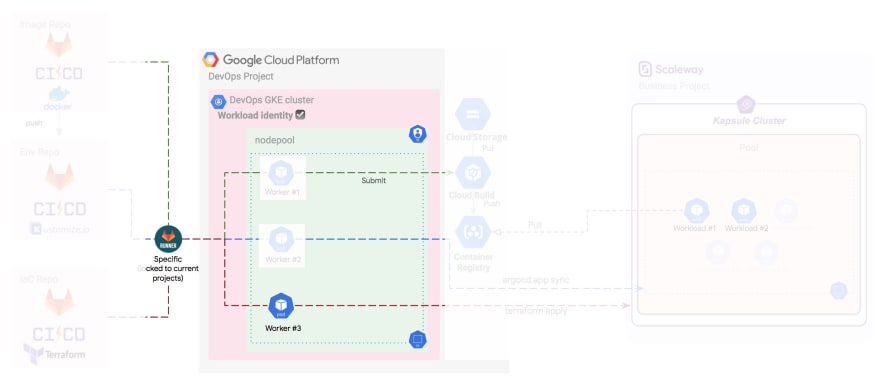
- #How to install gitlab on google cloud services how to#
- #How to install gitlab on google cloud services manual#
- #How to install gitlab on google cloud services full#
- #How to install gitlab on google cloud services code#
#How to install gitlab on google cloud services code#
We can push the change in the source code or just run the build manually.When we are developing a backend application, we often stumbled upon the need for database migrations. ġ72.17.0.2:5000/root/sample-spring-boot-on-kubernetesįinally, we may run our GitLab CI/CD pipeline. Here’s a similar configuration, but for the local instance of the registry. In order to push images to the docker.io registry, we need to provide client’s authentication credentials. If you do not pass any address, by default Jib tries to push the image to the docker.io registry. We may push our application image to a remote or a local Docker registry. kubectl apply -f k8s/deployment.yaml -n prod

kubectl apply -f k8s/deployment.yaml -n test Both deploy stages are allowed only for a master branch.
#How to install gitlab on google cloud services manual#
The last stage deploy-prod requires a manual approval. In the first step, we are deploying the application in the test namespace. It allows us to execute kubectl commands. To do that we are using the bitnami/kubectl image. Finally, we can deploy our container on Kubernetes. Jib builds an image and pushes it to the Docker registry.

Therefore, we don’t have to run an image with a Docker client. It is able to build an image in the docker-less mode. If all the tests are passed, we may build a Docker image with our application. Then, we are running JUnit tests using mvn test command. Let’s take a closer look at it.įirst, we are running the build stage responsible for building the application for the source code. It is automatically detected by GitLab CI. It consists of 5 stages and uses the Maven Docker image for executing builds. The GitLab CI/CD configuration file is available in the project root directory. In case of any problems, you should take a look at the pod logs. If you see the IP address and version number, it means that the runner is able to communicate with the master. To verify that everything works fine, we need to go to the section “Overview” -> “Runners”. The GitLab runner tries to communicate with the GitLab master. The GitLab runner is automatically deployed in the namespace gitlab-managed-apps. Let’s add it by clicking “Add Kubernetes cluster”.
#How to install gitlab on google cloud services full#
Here’s the full information about our Kubernetes cluster required by GitLab. $ kubectl describe secret gitlab-token-5sk2v -n kube-system After that, we need to copy value of field token, and paste it to the form without decoding. Then you should find the secret with the prefix gitlab in the kube-system namespace, and display its details. You can easily get it by running the command docker inspect -f '" | base64 -decodeįinally, we should create a special ServiceAccount for GitLab with the cluster-admin role. Since I’m running the Kubernetes cluster locally, I also need to override the default URL of the Docker registry. It can contain any of the GitLab configuration properties.

To override both these settings we need to add the environment variable GITLAB_OMNIBUS_CONFIG. We will also enable the container registry feature. First, we need to change the default external URL. We may choose between community and enterprise editions. In order to easily start with GitLab CI on Kubernetes, we will use its image from the Docker Hub. I will also describe that approach in the next section. The more advanced, production installation may be easily performed with Helm. With this in mind, I hope it will help to form an opinion about GitLab CI/CD.
#How to install gitlab on google cloud services how to#
I will show you how to run GitLab CI on Kubernetes with minimal effort and resources. In this article, I’m going to focus on simplicity. You will learn how to build it, run automated tests, build a Docker image, and finally run it on Kubernetes with GitLab CI. After that, we will create a pipeline for our Maven application. Then, we will use the special GitLab features in order to integrate it with Kubernetes. First, we are going to run an instance of the GitLab server on the local Kubernetes cluster.

In this article, I will describe all the steps required to build and deploy your Java application on Kubernetes with GitLab CI/CD. Furthermore, GitLab CI provides a built-in container registry to store and share images. You can take an advantage of the GUI support to set up a connection with your Kubernetes cluster. It is not hard to integrate GitLab with Kubernetes. You can use GitLab CI/CD to build and deploy your applications on Kubernetes.


 0 kommentar(er)
0 kommentar(er)
